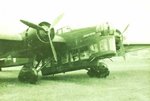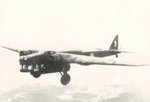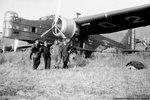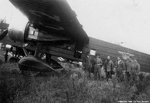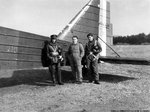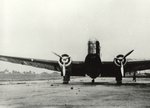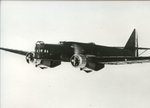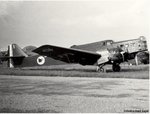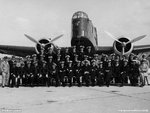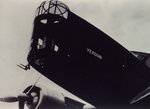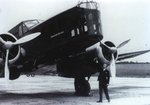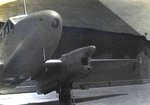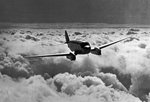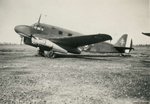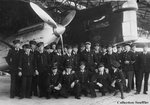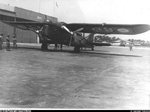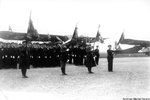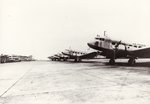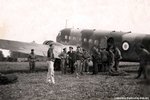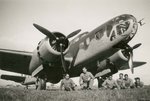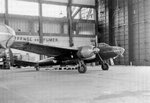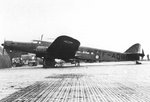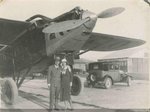The Armée de l'Air (literally, "army of the air") is the name of the French Air Force in its native language. It has borne this name only from August 1933 when it was still under the jurisdiction of the army. Today, several other countries, all of which were French colonies in the past, also use the term "Armée de l'Air" for their own air forces, including Cameroon (Armée de l'Air du Cameroun), Gabon (Armée de l'Air Gabonaise), Madagascar (Armée de l'Air Malgache) and Senegal (Armée de l'Air du Sénégal). The air forces of most other French-speaking countries use the term Force Aérienne before the adjective of their country to describe them, such as the Force Aérienne Belge for the Belgian air force. A notable exception is Canada, whose armed forces were unified in 1968 and so they use the joint English/French title, Canadian Armed Forces (CAF)/Forces Armées Canadiennes (FAC). The air element of the CAF is known officially as the Canadian Forces Air Command. This article deals exclusively with the history of the French air force from its earliest beginnings (but not French naval aviation, the Aéronautique Navale).
Navigation
Install the app
How to install the app on iOS
Follow along with the video below to see how to install our site as a web app on your home screen.
Note: This feature may not be available in some browsers.
More options
You are using an out of date browser. It may not display this or other websites correctly.
You should upgrade or use an alternative browser.
You should upgrade or use an alternative browser.
French Bombers and Transport Aircraft
- Thread starter gekho
- Start date
Ad: This forum contains affiliate links to products on Amazon and eBay. More information in Terms and rules
More options
Who Replied?- Thread starter
- #2
The Amiot 143M was a late 1930s French medium bomber designed to meet 1928 specifications for a bomber capable of day/night bombing, long-range reconnaissance and bomber escort. Félix Amiot's 1925 design was selected in 1928 for production over rivals Bleriot 137, Breguet 410 and SPCA 30. The prototype designated Amiot 140 flew in 1931, but actual production of the aging design did not begin until 1935 and continued for lack of a replacement until March 1937. Despite being of an ungainly two-tiered structure, slow and lacking maneuverability, and of obsolescent architecture, the Amiot 143M was a sturdy plane which was popular with its pilots. Notable were the very thick wings, with engines accessible in flight. The Amiot 143M production model mounted a turret in the nose and dorsal turrets, both of which housed one or two 7.5 mm (.295 in) MAC 1934 machine guns. In addition, a single 7.5 mm (.295 in) MAC 1934 was mounted in fore and aft positions in the ventral bombing gondola.
Attachments
Last edited:
- Thread starter
- #3
The Amiot 143M entered service in July 1935. The design was already ten years old and was quite out of date. Nevertheless, 87 Amiot 143M were in the front line. 50 equipped four metropolitan groupes: GBs I/34 and II/34 in the north, GBs I/38 and II/38 in the East, and 17 equipped one African groupe as of 10 May 1940. During the Phoney War, Amiot 143M groupes carried out reconnaissance and leaflet raids over Germany. Upon the start of the Battle of France, the Amiot 143M was used in night attacks on German lines of communications. The most significant action involving the Amiot 143M was a daring daylight raid on German bridgeheads near Sedan took place on 14 May 1940. A force of 13 planes from GBs I/34, II/34, and II/38 led by Commandant de Laubier encountered German Messerschmitt Bf 109 fighters en route. 15 bombers were destroyed.
By the time of the Armistice, the Amiot 143M had dropped a total of 474 tonnes (523 tons) of bombs. 53 Amiot 143Ms were in the Unoccupied Zone and 25 were in French North Africa. They were reorganized into GBs I/38 and II/38 and were used until July 1941 when they were replaced by LeO 451 bombers. Some planes of the II/38 served as a transports for the French in Syria. This groupe later went over to the Allied side after their landings in Africa. The last Amiot 143M was retired from service in February 1944.
A few Amiot 143M are reported to have been commandeered by the Germans and used as transports. Only 11 planes were left in the Unoccupied Zone when it was occupied by the Germans in 1943, and only three were flightworthy. Had the war gone on a little longer for France, it is likely that all of the Amiot 143M would have ended up in a training role, having been replaced by more modern bombers such as the Breguet 693. The obsolete plane was never intended to have such an important role come war time, but slow French production made its use necessary - often being pulled from training squadrons to shore up bomber groupes.
By the time of the Armistice, the Amiot 143M had dropped a total of 474 tonnes (523 tons) of bombs. 53 Amiot 143Ms were in the Unoccupied Zone and 25 were in French North Africa. They were reorganized into GBs I/38 and II/38 and were used until July 1941 when they were replaced by LeO 451 bombers. Some planes of the II/38 served as a transports for the French in Syria. This groupe later went over to the Allied side after their landings in Africa. The last Amiot 143M was retired from service in February 1944.
A few Amiot 143M are reported to have been commandeered by the Germans and used as transports. Only 11 planes were left in the Unoccupied Zone when it was occupied by the Germans in 1943, and only three were flightworthy. Had the war gone on a little longer for France, it is likely that all of the Amiot 143M would have ended up in a training role, having been replaced by more modern bombers such as the Breguet 693. The obsolete plane was never intended to have such an important role come war time, but slow French production made its use necessary - often being pulled from training squadrons to shore up bomber groupes.
Attachments
Last edited:
- Thread starter
- #4
The MB.200 was a French bomber aircraft of the 1930s designed and built by Societé des Avions Marcel Bloch. A twin-engined high-winged monoplane with a fixed undercarriage, over 200 MB.200s were built for the French Air Force, and the type was also licence built by Czechoslovakia, but it soon became obsolete, and was largely phased out by the start of the Second World War. The Bloch MB.200 was designed in response to a 1932 requirement for a new day/night bomber to equip the French Air Force. It was a high-winged all-metal cantilever monoplane, with a slab-sided fuselage, powered by two Gnome-Rhône 14K radial engines. It had a fixed tailwheel undercarriage and featured an enclosed cockpit for the pilots. Defensive machine guns were in nose and dorsal gun turrets and a under fuselage gondola.
The first of three prototypes flew on 26 June 1933. As one of the winning designs for the competition, (the other was the larger Farman F.221), an initial order for 30 MB.200s was placed on 1 January 1934, entering service late in that year. Further orders followed, and the MB.200 equipped 12 French squadrons by the end of 1935. Production in France totalled over 208 aircraft (4 by Bloch, 19 by Breguet, 19 by Loire, 45 by Hanriot, 10 by SNCASO and 111 by Potez.
The first of three prototypes flew on 26 June 1933. As one of the winning designs for the competition, (the other was the larger Farman F.221), an initial order for 30 MB.200s was placed on 1 January 1934, entering service late in that year. Further orders followed, and the MB.200 equipped 12 French squadrons by the end of 1935. Production in France totalled over 208 aircraft (4 by Bloch, 19 by Breguet, 19 by Loire, 45 by Hanriot, 10 by SNCASO and 111 by Potez.
Attachments
Last edited:
- Thread starter
- #5
Czechoslovakia chose the MB.200 as part of a modernisation program for its air force of the mid 1930s. Although at the rate of aircraft development at that time, the MB.200 would quickly become obsolete, the Czechoslovakians needed a quick solution involving the license production of a proven design, as their own aircraft industry did not have sufficient development experience with such a large aircraft, or with all-metal airframes and stressed-skin construction, placing an initial order for 74 aircraft. After some delays, both Aero and Avia began license-production in 1937, with a total of about 124 built. Czechoslovakian MB.200s were basically similar to their French counterparts, with differences in defensive armament and other equipment.
The gradual German conquest of Czechoslovakia meant that MB.200s eventually passed under their control, including aircraft that were still coming off the production line. As well as serving in the German Luftwaffe, some bombers were distributed to Bulgaria.
The gradual German conquest of Czechoslovakia meant that MB.200s eventually passed under their control, including aircraft that were still coming off the production line. As well as serving in the German Luftwaffe, some bombers were distributed to Bulgaria.
Attachments
Last edited:
- Thread starter
- #6
The MB.210 derived from the MB.200 and differs in particular by its more deeply-set, cantilever wing and the retractable undercarriage from their predecessor. Developed as a private venture, the prototype MB.210 accomplished its first flight on 23 November 1934, powered by two 596 kW (800 hp) Gnome-Rhône 14Kdrs/grs air-cooled radial engines and having a fixed undercarriage. This was followed by a second prototype, the MB.211 Verdun, powered by 641 kW (860 hp) Hispano-Suiza 12Y V-12 liquid-cooled inlines and fitted with a retractable undercarriage, this flying on 29 August 1935. Initial flight testing of this version was somewhat disappointing, so no further examples were built. Further progress with the MB.210, however, convinced the Armée de l'Air to order series production, the first example of which flew on 12 December 1936.
The satisfaction did not last very long, however, since it was underpowered and the engines of production aircraft were inclined to overheating. The type was grounded until its engines could be replaced by the more powerful and reliable Gnome-Rhône 14N, these engines first being tested in summer 1937 and had to be replaced. Altogether, 257 units were manufactured amongst companies as diverse as Les Mureaux over Potez-CAMS, Breguet, Hanriot, and Renault.
The satisfaction did not last very long, however, since it was underpowered and the engines of production aircraft were inclined to overheating. The type was grounded until its engines could be replaced by the more powerful and reliable Gnome-Rhône 14N, these engines first being tested in summer 1937 and had to be replaced. Altogether, 257 units were manufactured amongst companies as diverse as Les Mureaux over Potez-CAMS, Breguet, Hanriot, and Renault.
Attachments
Last edited:
- Thread starter
- #7
In September 1939, the Bloch MB.210 equipped 12 bomber units of the Armée de l'Air. At the time of Nazi Germany's attack on France in spring 1940, these squadrons were in the middle of a restructuring aimed at removing outdated aircraft from the front line. Up to the armistice on 25 June of the same year, the MB.210 was used still for nighttime bomb employments and shifted then to North Africa.
Attachments
Last edited:
- Thread starter
- #8
- Thread starter
- #9
The Caudron C.440 Goéland ("seagull") was a six-seat twin-engine utility aircraft developed in France in the mid 1930s. It was a conventionally-configured low-wing cantilever monoplane with tailwheel undercarriage. The main undercarriage units retracted into the engine nacelles. Construction was wooden throughout, with wooden skinning everywhere but the forward and upper fuselage sections, which were skinned in metal. As usually configured, the cabin seated six passengers with baggage compartments fore and aft, and a toilet after. Apart from private buyers, the C.440 was also bought by the Armée de l'Air, Aéronavale and Air France, and some were exported for service with Aeroput. Production of the C.440 and its subtypes continued until the outbreak of World War II, at which time many C.440s were impressed into military service. Following the fall of France, some were operated by the German Luftwaffe and Lufthansa. Another user was the Slovenské vzdušné zbrane - it ordered 12 aircraft as the C.445M in 1942.
Production was restarted following the war for both military and civil use as a transport and as a twin-engined trainer. In the post war reorganisation of the French aircraft industry, Caudron became part of SNCA du Nord, and the aircraft became the Nord Goeland; 325 of these were built. Post-war commercial operators included Air France, SABENA, Aigle Azur, and Compagnie Air Transport (CAT).
Production was restarted following the war for both military and civil use as a transport and as a twin-engined trainer. In the post war reorganisation of the French aircraft industry, Caudron became part of SNCA du Nord, and the aircraft became the Nord Goeland; 325 of these were built. Post-war commercial operators included Air France, SABENA, Aigle Azur, and Compagnie Air Transport (CAT).
Attachments
Last edited:
- Thread starter
- #10
Developed by Marcel Riffard to meet the need for a fast, economical and comfortable transport to carry a limited number of passengers, the Caudron C.440 Goeland (Seagull) twin-engined low-wing cantilever monoplane made its appearance during 1934. Test flown by Raymond Delmotte, it proved its pedigree by combining economy with aerodynamic excellence. One of the most successful aircraft of its time, it was produced in greater numbers than any other transport in its category. The two-spar wing was of spruce and plywood with a plywood skin, and inboard of the inset ailerons the whole trailing edge of the wing was occupied by flaps which also extended beneath the fuselage. The fuselage was largely of wood and had plywood skinning except for the nose section and upper decking which had stressed sheet metal covering. The cantilever tail unit was also a wooden structure, its fixed surfaces plywood-covered and control surfaces fabric-covered. Streamlined nacelles for the 164kW Bengali 6 engines extended below and to the rear of the wings; and the main landing gear units, each incorporating an oleo-sprung fork, retracted rearwards to lie wholly enclosed within the engine nacelles. The prototype had fairings attached to the front of each main leg to cover the wheel wells when the landing gear was retracted, but the next two C.440s had two wheel well doors attached to the underside of each nacelle, a feature of all future Goelands. A non-retracting steerable tailwheel was fitted.
In its basic passenger configuration the Goeland had comfortable cabin accommodation for six passengers. The pilot and co-pilot, who doubled as wireless operator, were seated side-by-side and had dual controls. Baggage holds were located fore and aft, and a toilet was situated at the rear of the cabin.
The Goeland remained in production in several versions up to World War II, the principal model being the C.445, also adopted by the Armee de I'Air as the C.445M and used for a variety of tasks, including military communications duties and crew training. Some C.445Ms were used by the Aeronavale. Civil users of the Goeland included Air France, Air Bleu and Regie Air Afrique. Air Bleu used one C.444 and several C.445s on night mail routes from Paris to the Spanish border, and Regie Air Afrique operated the type on its North African routes. Other Goelands flew passenger services in French West Africa and Madagascar. The type was sold abroad to Aeroput of Yugoslavia, and to Bulgaria and Spain. Two C.445Ms were supplied to the Belgian Aeronautique Militaire in 1940.
Production continued during World War II, and after the German occupation of France 44 C.445s and 10 C.445Ms were requisitioned, some flying on Lufthansa routes and others being operated by the Luftwaffe. Considerable numbers of the C.445M and C.449 were built for the Germans at Renault's Billancourt and Caudron's Issy-les-Mou-lineaux factories. Production at Billancourt, however, was reduced to a trickle after a heavy RAF raid in 1943. The Germans used the Goeland as a pilot, radio and navigational trainer, for communications, and a small number had glazed noses for bomb-aimer training. In addition to the C.447 specialised ambulance version, a few other Goelands were used for casualty transport.
Other Goelands served the French Vichy regime, while a number were scattered throughout France's overseas empire, most of them in North Africa. Several C.445s operated in the UK after June 1940.
In 1945 the Caudron plant was taken over by the French government as the Ateliers Aeronautiques d'lssy-les-Mouli-neaux. Here production of the C.445M and C.449 continued under the designation AA.1. Post-war Goelands continued in service with Air France. At the beginning of 1946 the company had 23 C.445s and 19 C.449s at its disposal; these flew domestic night mail services for a time, but were employed for many years as crew trainers. Other civil operators included SABENA and two French companies, Aigle Azur and CAT (Compagnie Air Transport). Goelands continued to fly for a number of years on a wide range of duties with the Armee de I'Air.
Production of all versions of the Goeland totalled 1,702. A number of early aircraft were converted subsequently to later versions. The production listing below totals 1,446; it has not been possible to verify the sub-type designations of the remaining 256 Goelands.
In its basic passenger configuration the Goeland had comfortable cabin accommodation for six passengers. The pilot and co-pilot, who doubled as wireless operator, were seated side-by-side and had dual controls. Baggage holds were located fore and aft, and a toilet was situated at the rear of the cabin.
The Goeland remained in production in several versions up to World War II, the principal model being the C.445, also adopted by the Armee de I'Air as the C.445M and used for a variety of tasks, including military communications duties and crew training. Some C.445Ms were used by the Aeronavale. Civil users of the Goeland included Air France, Air Bleu and Regie Air Afrique. Air Bleu used one C.444 and several C.445s on night mail routes from Paris to the Spanish border, and Regie Air Afrique operated the type on its North African routes. Other Goelands flew passenger services in French West Africa and Madagascar. The type was sold abroad to Aeroput of Yugoslavia, and to Bulgaria and Spain. Two C.445Ms were supplied to the Belgian Aeronautique Militaire in 1940.
Production continued during World War II, and after the German occupation of France 44 C.445s and 10 C.445Ms were requisitioned, some flying on Lufthansa routes and others being operated by the Luftwaffe. Considerable numbers of the C.445M and C.449 were built for the Germans at Renault's Billancourt and Caudron's Issy-les-Mou-lineaux factories. Production at Billancourt, however, was reduced to a trickle after a heavy RAF raid in 1943. The Germans used the Goeland as a pilot, radio and navigational trainer, for communications, and a small number had glazed noses for bomb-aimer training. In addition to the C.447 specialised ambulance version, a few other Goelands were used for casualty transport.
Other Goelands served the French Vichy regime, while a number were scattered throughout France's overseas empire, most of them in North Africa. Several C.445s operated in the UK after June 1940.
In 1945 the Caudron plant was taken over by the French government as the Ateliers Aeronautiques d'lssy-les-Mouli-neaux. Here production of the C.445M and C.449 continued under the designation AA.1. Post-war Goelands continued in service with Air France. At the beginning of 1946 the company had 23 C.445s and 19 C.449s at its disposal; these flew domestic night mail services for a time, but were employed for many years as crew trainers. Other civil operators included SABENA and two French companies, Aigle Azur and CAT (Compagnie Air Transport). Goelands continued to fly for a number of years on a wide range of duties with the Armee de I'Air.
Production of all versions of the Goeland totalled 1,702. A number of early aircraft were converted subsequently to later versions. The production listing below totals 1,446; it has not been possible to verify the sub-type designations of the remaining 256 Goelands.
Attachments
Last edited:
- Thread starter
- #11
This two-engine aircraft was built by the French Potez company to fulfill a 1932 specification for a new reconnaissance bomber. Built as a private venture, this aircraft, designated the Potez 54, flew for the first time on 14 November 1933. Designed by Louis Coroller, it was intended as a four-seat aircraft capable of performing duties such as bomber, transport and long-range reconnaissance. The Potez 54 was a high-wing monoplane, of mixed wood and metal covering over a steel tube frame. The prototype had twin fins and rudders, and was powered by two 515 kW (690 hp) Hispano-Suiza 12Xbrs V-12 engines in streamlined nacelles, which were connected to the fuselage by stub wings. The main landing gear units retracted into the nacelles, and auxiliary bomb racks were mounted beneath the stub wings. There were manually-operated turrets at the nose and dorsal positions, as well as a semi-retractable dustbin-style ventral turret. During development, the original tailplane was replaced by a single fin and rudder, and in this form, the type was re-designated the Potez 540 and delivered to the Armee de I'Air on 25 November 1934. A total of 192 Potez 540s were built.
Their first combat was in the Spanish Civil War, where they were employed by the Spanish Republicans. In the late 1930s, these aircraft were becoming obsolete so they were withdrawn from reconnaissance and bombing duties and were relegated to French transport units. They were also employed as paratrooper training and transport aircraft. By September 1939 and the beginning of World War II, they had been largely transferred to the French colonies in North Africa, where they continued to function in transport and paratrooper service. Their role in even these secondary assignments was problematic given their poor defensive armament and vulnerability to modern enemy fighters. Following the French capitulation to Germany in June 1940, those Potez 540s still flying served the Vichy French Air Force mainly in the French overseas colonies. Most of these machines were retired or destroyed by late 1943.
Their first combat was in the Spanish Civil War, where they were employed by the Spanish Republicans. In the late 1930s, these aircraft were becoming obsolete so they were withdrawn from reconnaissance and bombing duties and were relegated to French transport units. They were also employed as paratrooper training and transport aircraft. By September 1939 and the beginning of World War II, they had been largely transferred to the French colonies in North Africa, where they continued to function in transport and paratrooper service. Their role in even these secondary assignments was problematic given their poor defensive armament and vulnerability to modern enemy fighters. Following the French capitulation to Germany in June 1940, those Potez 540s still flying served the Vichy French Air Force mainly in the French overseas colonies. Most of these machines were retired or destroyed by late 1943.
Attachments
Last edited:
vikingBerserker
Lieutenant General
Oustanding! I love the pic of the Am 143
Milos Sijacki
Senior Airman
wow....thx for all the info about these bombers and also thx for the photos. Nice read  but I must say this, those are some weird looking, and sorry for this, ugly looking planes.
but I must say this, those are some weird looking, and sorry for this, ugly looking planes.
- Thread starter
- #14
The Bloch MB.220 was a French twin-engine passenger transport airplane built by Société des Avions Marcel Bloch during the 1930s. The M.B.220 was an all-metal low-wing cantilever monoplane. It was powered by two Gnome-Rhône radial engines and had a retractable landing gear. Normal crew was four, with room for 16 passengers, with eight seats each side of a central aisle. The prototype first flew in December 1935, and was followed by 16 production aircraft. At least five examples survived the war and were modified as the M.B.221 with Wright Cyclone R-1820-97 engines.By the middle of 1938, the type was being utilised by Air France on European routes. The first service of the type (between Paris and London) was flown on 27 March 1938 with a scheduled time of 1 hour 15 minutes. During World War II, most MB.220s were taken over as military transports, including service with German, Free French and Vichy French air forces. Air France continued to fly the aircraft (as MB.221s) after the war on short-range European routes. It sold four aircraft in 1949 but within a year all had been withdrawn from service.
Attachments
Last edited:
- Thread starter
- #15
The Bloch MB.130 and its derivatives were a series of French monoplane reconnaissance-bombers developed during the 1930s. They saw some limited action at the beginning of World War II but were obsolete by that time and suffered badly against the Luftwaffe. After the fall of France, a few were pressed into Luftwaffe service.
The MB.130 was developed in response to the August 1933 French Aviation Ministry request for a reconnaissance and tactical bomber. It was an all-metal, twin-engine, low-wing monoplane with retractable landing gear, and armed with three flexible machine guns, one each in the nose, dorsal turret, and ventral gondola. It first flew on 29 June 1934, and despite very ordinary performance, soon entered production, 40 machines being ordered in October 1935. An improved version, the MB.131 was first flown on 16 August 1936, but still needed more work to overcome its deficiencies. The radically revised second prototype which flew on 5 May 1937 eventually formed the basis for series production, with aircraft being manufactured by SNCASO, the nationalised company that had absorbed Bloch and Blériot. Total production (including prototypes) was 143.
Entering service in June 1938, the MB.131 went on to equip seven reconnaissance Groupes, six in metropolitan France and one in North Africa. Upon the outbreak of the war, the metropolitan Groupes suffered heavy losses in attempts at daylight reconnaissance of Germany's western borders. They were subsequently restricted to flying night missions, though they still suffered heavy losses even then. By May 1940, all metropolitan units had been converted to Potez 63.11 aircraft, with only the African groupe retaining them for front-line duty. After the Battle of France, the planes left in Vichy possession were relegated to target towing duty. 21 planes were reported captured by the Luftwaffe in inoperable condition, but photographic evidence suggests at least a few flew for the Nazis.
The MB.130 was developed in response to the August 1933 French Aviation Ministry request for a reconnaissance and tactical bomber. It was an all-metal, twin-engine, low-wing monoplane with retractable landing gear, and armed with three flexible machine guns, one each in the nose, dorsal turret, and ventral gondola. It first flew on 29 June 1934, and despite very ordinary performance, soon entered production, 40 machines being ordered in October 1935. An improved version, the MB.131 was first flown on 16 August 1936, but still needed more work to overcome its deficiencies. The radically revised second prototype which flew on 5 May 1937 eventually formed the basis for series production, with aircraft being manufactured by SNCASO, the nationalised company that had absorbed Bloch and Blériot. Total production (including prototypes) was 143.
Entering service in June 1938, the MB.131 went on to equip seven reconnaissance Groupes, six in metropolitan France and one in North Africa. Upon the outbreak of the war, the metropolitan Groupes suffered heavy losses in attempts at daylight reconnaissance of Germany's western borders. They were subsequently restricted to flying night missions, though they still suffered heavy losses even then. By May 1940, all metropolitan units had been converted to Potez 63.11 aircraft, with only the African groupe retaining them for front-line duty. After the Battle of France, the planes left in Vichy possession were relegated to target towing duty. 21 planes were reported captured by the Luftwaffe in inoperable condition, but photographic evidence suggests at least a few flew for the Nazis.
Attachments
- Thread starter
- #16
One hundred and thirty-nine production Bloch 131 were built for the Armee de l'Air in the RB4 category as four-crew machines intended for bombing and reconnaissance. The first six aircraft were delivered by June 1938, the rest by September 1939. Entering service in June 1938, the MB.131 went on to equip seven reconnaissance Groupes, six in metropolitan France and one in North Africa. The aircraft were deployed to the following units: GR I/14, GR II/14, GR I/21, GR II/22, GR I/35, GR I/36, GR II/36, GR I/55, GR II/55 and GR I/61. On the eve of the war, 109 aircraft were in service in these units.
Unfortunately they were used on long-range daytime reconnaissance missions without escort and were no match for the Luftwaffe's Messerschmitt Me 109s. They were subsequently restricted to flying night missions, though they still suffered heavy losses even then. Starting in October 1939, they were pulled back from the front line and used only for training missions, target towing and firing school exercises, with the exception of a few aircraft in GR I/36 and II/36. As of 10 May 1940, 35 MB 131s were still in ancillary service with the reconnaissance groups, while 64 were in training units. Between 3 September 1939 and 24 June 1940, 8 aircraft were lost, 4 shot down and 4 destroyed in accidents, killing a total of 10 crew. By May 1940, all metropolitan units had been converted to Potez 63.11 aircraft, with only the African groupe retaining them for first-line duty.
At the Armistice, there were 53 aircraft in the free zone and, in November 1942, the Germans captured 21, which were scrapped. After the Battle of France, the planes left in Vichy possession were relegated to target towing duty. 21 planes were reported captured by the Luftwaffe in inoperable condition, but photographic evidence suggests at least a few flew for the Nazis.
Unfortunately they were used on long-range daytime reconnaissance missions without escort and were no match for the Luftwaffe's Messerschmitt Me 109s. They were subsequently restricted to flying night missions, though they still suffered heavy losses even then. Starting in October 1939, they were pulled back from the front line and used only for training missions, target towing and firing school exercises, with the exception of a few aircraft in GR I/36 and II/36. As of 10 May 1940, 35 MB 131s were still in ancillary service with the reconnaissance groups, while 64 were in training units. Between 3 September 1939 and 24 June 1940, 8 aircraft were lost, 4 shot down and 4 destroyed in accidents, killing a total of 10 crew. By May 1940, all metropolitan units had been converted to Potez 63.11 aircraft, with only the African groupe retaining them for first-line duty.
At the Armistice, there were 53 aircraft in the free zone and, in November 1942, the Germans captured 21, which were scrapped. After the Battle of France, the planes left in Vichy possession were relegated to target towing duty. 21 planes were reported captured by the Luftwaffe in inoperable condition, but photographic evidence suggests at least a few flew for the Nazis.
Attachments
FalkeEins
Senior Airman
..another neat thread Gehko..well done
over at Lela Presse we are currently working on a nice new hardback book devoted to the Bloch 200/210. French text but all captions in English
http://www.avions-bateaux.com/en/catalogue-livre-catalogue_1119.html
over at Lela Presse we are currently working on a nice new hardback book devoted to the Bloch 200/210. French text but all captions in English
http://www.avions-bateaux.com/en/catalogue-livre-catalogue_1119.html
- Thread starter
- #18
The Amiot 350 series originated in the same 1934 requirement as a rival to the Lioré et Olivier LeO 451. Derived from the Amiot 341 mail plane, the Amiot 340 prototype was involved in a propaganda misinformation flight to Berlin in August of 1938 to convince the Germans that the French employed modern bombers. Though 130 machines were ordered by the French government that year, production delays and ordered modifications ensured that September 1939 saw no delivered aircraft. Eventually, the ordered number of this very modern aircraft reached 830, though ultimately only 80 machines were received by the Air Ministry. The main variant was the twin-tailed 351; however, due to various delays, the single-tailed 354 was accepted into service as an interim type. The Amiot 351 was planned to mount one 7.5 mm (.295 in) MAC 1934 machine gun in nose and ventral positions and one 20 mm Hispano-Suiza HS.404 cannon in the dorsal position. Due to various technical issues with the armament installation, many aircraft went to operational units with only a single light machine gun in the dorsal position.
In May 1940, the Amiot 351/354 was in the process of equipping just two bomber groupes: GB 1/21 and GB II/21 based at Avignon. Though 200 were in the final stages of construction, only 35 were ready for flight. This situation was exacerbated by the fact that the Amiot 351/354 was constructed in three separate factories, two of which were later bombed by the Germans. On 16 May 1940, the several Amiot 351/354 carried out armed reconnaissance missions over Maastricht in the Netherlands - the first combat mission conducted by planes of this type. By June, the Amiot 351/354 was also delivered for GB I/34 and GB II/34, neither ever flying them in combat. At that time, all Amiot 351/354s were based on the northern front. Three had been lost in combat, 10 in training accidents. All aircraft were ordered to evacuate to Africa on 17 June, 37 surviving the trip. As their numbers were too few to effectively engage the Italians, they planes were sent back to Metropolitan France and their groupes disbanded in August 1940.
Five Amiot 351/354s continued to be used as a mail plane after the Battle of France. Four Amiot 351/354 were commandeered by the Luftwaffe as transports, two found service in the 1./KG200 special service geschwader. Engines taken from these aircraft were later used on Messerschmitt Me 323 cargo transports.
In May 1940, the Amiot 351/354 was in the process of equipping just two bomber groupes: GB 1/21 and GB II/21 based at Avignon. Though 200 were in the final stages of construction, only 35 were ready for flight. This situation was exacerbated by the fact that the Amiot 351/354 was constructed in three separate factories, two of which were later bombed by the Germans. On 16 May 1940, the several Amiot 351/354 carried out armed reconnaissance missions over Maastricht in the Netherlands - the first combat mission conducted by planes of this type. By June, the Amiot 351/354 was also delivered for GB I/34 and GB II/34, neither ever flying them in combat. At that time, all Amiot 351/354s were based on the northern front. Three had been lost in combat, 10 in training accidents. All aircraft were ordered to evacuate to Africa on 17 June, 37 surviving the trip. As their numbers were too few to effectively engage the Italians, they planes were sent back to Metropolitan France and their groupes disbanded in August 1940.
Five Amiot 351/354s continued to be used as a mail plane after the Battle of France. Four Amiot 351/354 were commandeered by the Luftwaffe as transports, two found service in the 1./KG200 special service geschwader. Engines taken from these aircraft were later used on Messerschmitt Me 323 cargo transports.
Attachments
- Thread starter
- #19
Dewoitine D-338
The Dewoitine D.338 was a 1930s French 22-passenger airliner built by Dewoitine. The D.338 was a development of the D.333 with retractable undercarriage. First flown in 1936 it had a slightly increased wingspan, and the fuselage was lengthened by 3.18 m (10 ft 5¼ in). For short routes, the aircraft could carry 22 passengers, aircraft used in the Far East were fitted with 12 luxury seats, including six that could be converted into sleeping berths. The D.338 had a reputation for reliability and was used during World War II in the French overseas possessions. Nine aircraft that survived the war were operated on the Paris-Nice service for several months.
Latecoere 28
The Latécoère 28 was a successful French long-haul mail plane and passenger airliner of the 1930s. It was the main symbol of Air France's predecessor, Aéropostale in its efforts to establish intercontinental air mail services and support French colonialism and French cultural influence between the wars. Its pilots included famous poets and French men of letters such as Antoine de Saint Exupéry and Jean Mermoz as well as the usual veterans from World War I. The Latécoère 28 was a development of the Latécoère 26. It was braced high-wing single-engined monoplane initially powered by Renault 12Jbr engine. The Latécoère 28 had a fixed tailwheel undercarriage and enclosed cockpit for two crew. The cabin was fitted for eight-passengers.
The Dewoitine D.338 was a 1930s French 22-passenger airliner built by Dewoitine. The D.338 was a development of the D.333 with retractable undercarriage. First flown in 1936 it had a slightly increased wingspan, and the fuselage was lengthened by 3.18 m (10 ft 5¼ in). For short routes, the aircraft could carry 22 passengers, aircraft used in the Far East were fitted with 12 luxury seats, including six that could be converted into sleeping berths. The D.338 had a reputation for reliability and was used during World War II in the French overseas possessions. Nine aircraft that survived the war were operated on the Paris-Nice service for several months.
Latecoere 28
The Latécoère 28 was a successful French long-haul mail plane and passenger airliner of the 1930s. It was the main symbol of Air France's predecessor, Aéropostale in its efforts to establish intercontinental air mail services and support French colonialism and French cultural influence between the wars. Its pilots included famous poets and French men of letters such as Antoine de Saint Exupéry and Jean Mermoz as well as the usual veterans from World War I. The Latécoère 28 was a development of the Latécoère 26. It was braced high-wing single-engined monoplane initially powered by Renault 12Jbr engine. The Latécoère 28 had a fixed tailwheel undercarriage and enclosed cockpit for two crew. The cabin was fitted for eight-passengers.
Attachments
Last edited:
- Thread starter
- #20
When France was finally free, many Ju-52 were captured and used against their own owners. Many others were destroyed after the war, but 585 were manufactured after 1945. In France, the machine had been manufactured during the war by the Junkers-controlled Amiot company, and production continued afterwards as the Amiot AAC 1 Toucan
Attachments
Last edited:
Users who are viewing this thread
Total: 1 (members: 0, guests: 1)


